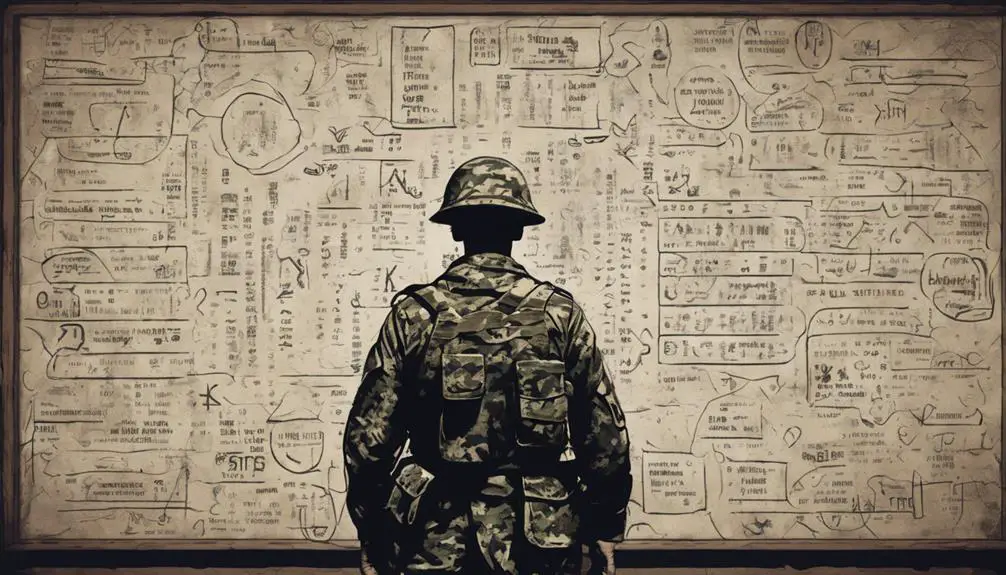You use military slang acronyms every day, even if you're not aware of it – from 'SITREP' (situation report) to 'FOB' (forward operating base), these abbreviations are an integral part of military language and culture. Acronyms like 'ROE' and 'SNAFU' originated in WWI to simplify complex terminology and enable rapid communication. Each branch has unique acronyms shaped by roles, histories, and cultures. Understanding these terms is essential for grasping military communication and culture. As you explore military slang acronyms, you'll discover a complex web of terminology that's essential for effective communication – and there's more to uncover.
Origins of Military Acronyms
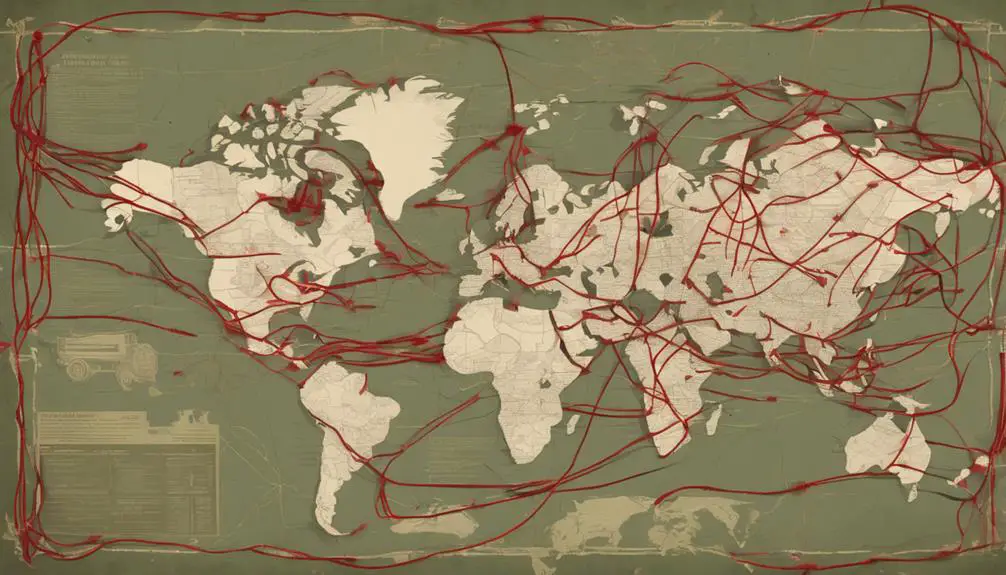
What sparked the widespread use of acronyms in the military? As you explore the historical roots of military slang, you'll discover that the need for concise communication drove the development of acronyms.
During World War I, the military began using abbreviations to simplify complex terminology and facilitate rapid communication. This linguistic evolution was important in high-pressure situations where every second counted.
As military operations expanded, so did the use of acronyms. The US military, in particular, adopted acronyms to standardize communication across different branches and units. This standardization enabled efficient information exchange, reducing errors and miscommunications.
The military's reliance on acronyms continued to grow, with new terms emerging to describe modern warfare technologies and tactics.
Today, acronyms are an integral part of military language, allowing personnel to quickly convey complex information. The widespread adoption of acronyms in the military hasn't only improved communication but also contributed to the development of a unique linguistic culture.
Most Commonly Used Terms
From 'ROE' to 'SITREP', you're likely familiar with some of the most commonly used military acronyms, but do you know what they really mean and how they're used in everyday military communication?
These terms are more than just jargon; they're essential to understanding military operations and culture. Take 'ROE', for instance, which stands for Rules of Engagement, outlining when and how to engage the enemy.
Then there's 'SITREP', short for Situation Report, providing updates on the battlefield. You might've also come across 'FOB', or Forward Operating Base, a temporary outpost for military operations.
Term Trivia: Did you know that 'SITREP' originated in World War II, while 'ROE' has its roots in the Gulf War? It's fascinating to explore the history behind these acronyms!
However, Acronym Anxiety is a real concern – with so many terms to learn, it's easy to get overwhelmed. By familiarizing yourself with these essential acronyms, you'll better understand military communication and be more confident in your interactions with military personnel.
Acronyms in Different Branches
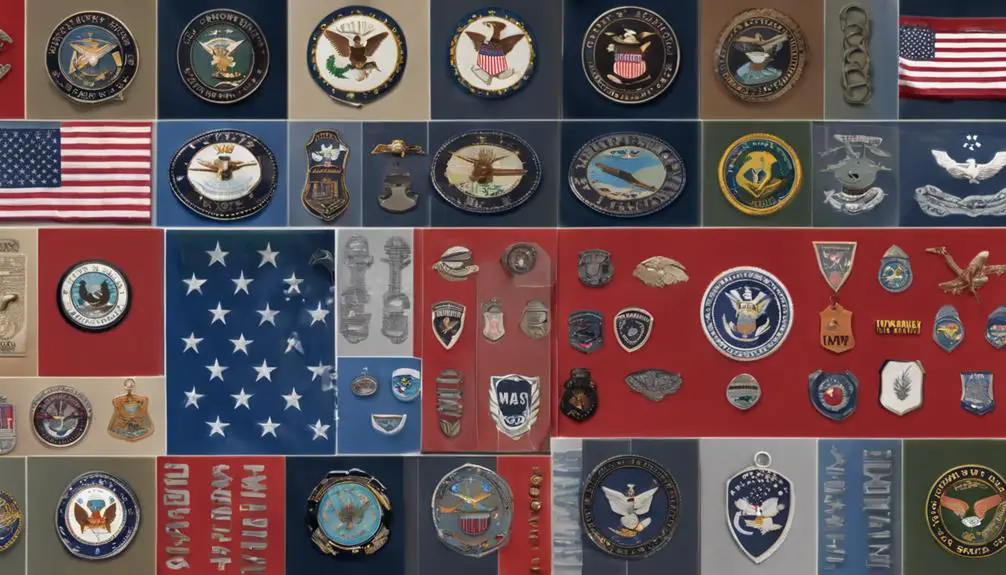
Explore the nuances of military acronyms as they vary across different branches, where you'll discover that the Army, Navy, Air Force, and Marines each have their own unique set of abbreviations. You'll find that each branch has developed its own distinct language, shaped by their specific roles, histories, and cultures.
Navy jargon, for instance, is characterized by nautical terms like 'deck' and 'hull,' reflecting its maritime focus. In contrast, the Army's acronyms often relate to ground operations, such as 'FOB' (Forward Operating Base) and 'TOC' (Tactical Operations Center).
Branch differences are also evident in the way they use acronyms. The Air Force, with its emphasis on aviation, has terms like 'SAR' (Search and Rescue) and 'CAS' (Close Air Support). Meanwhile, the Marines, known for their amphibious warfare, use acronyms like 'LAV' (Light Armored Vehicle) and 'MEU' (Marine Expeditionary Unit).
Understanding these branch-specific acronyms is essential for effective communication and collaboration across the military. By recognizing these differences, you'll gain a deeper appreciation for the unique identities and strengths of each branch.
Slang for Military Operations
You'll encounter a range of colorful slang terms when delving into military operations, where phrases like 'hurry up and wait' and 'SNAFU' (Situation Normal: All Fouled Up) reflect the humor and frustration that often accompany military life.
Military operations have their own unique language, filled with tactical lingo and operation nicknames that can be both confusing and intriguing. Here are some examples:
- Operation Nicknames: Military operations often have nicknames, like Operation Desert Storm or Operation Enduring Freedom, which are used to identify and distinguish between different missions.
- SNAFU: As mentioned earlier, SNAFU stands for Situation Normal: All Fouled Up, a phrase that humorously captures the chaos that can ensue during military operations.
- Hurry Up and Wait: This phrase is often used to describe the frustrating experience of rushing to prepare for a mission, only to wait for extended periods of time before it begins.
- Tactical Lingo: Military personnel use specialized language, such as 'HOOAH' (Heard, Understood, Acknowledged) or 'Roger That' (Acknowledgement of received information), to communicate quickly and efficiently during operations.
- Code Names: Military operations often have code names, like Operation Overlord or Operation Neptune, which are used to maintain secrecy and confidentiality.
Communicating With Acronyms
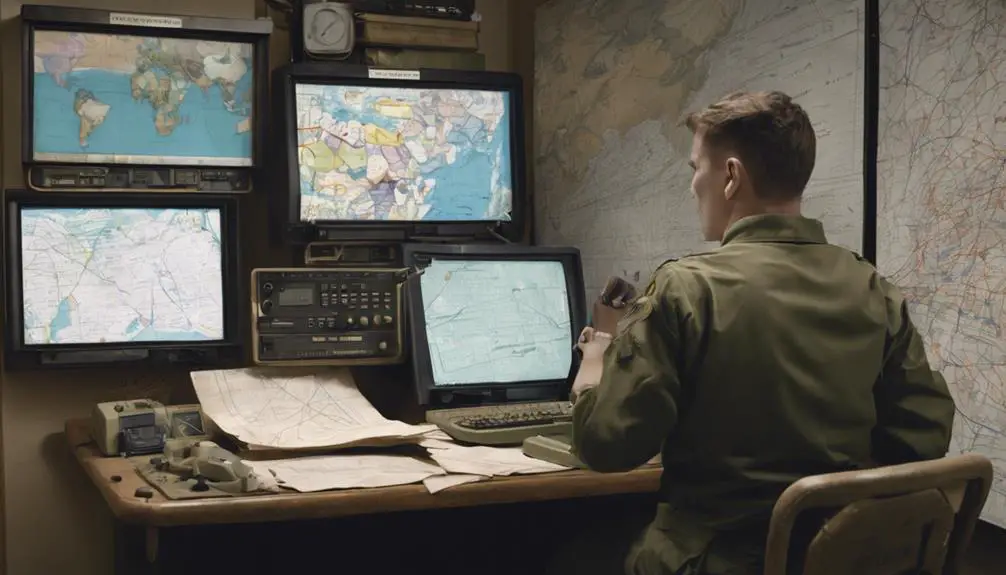
As you navigate the complex world of military operations, you'll encounter a plethora of acronyms that serve as shorthand for complex concepts, allowing personnel to communicate quickly and accurately. These acronyms are important for efficient communication, but they can also lead to Acronym Overload, making it challenging for newcomers to understand the language.
When communicating with acronyms, it's important to take into account Cultural Barriers that may hinder understanding. For instance, acronyms that are familiar to one unit may be unfamiliar to another, leading to confusion. To avoid this, it's necessary to define acronyms when communicating with personnel from different units or branches.
When using acronyms, it's crucial to make sure that all parties understand their meaning. This can be achieved by providing a list of acronyms and their definitions, especially in written communication. By doing so, you can ensure that your message is conveyed accurately and efficiently, even in the most complex military operations.
Deciphering Military Jargon
When deciphering military jargon, you'll need to be aware of the nuances of language that can affect understanding, such as idioms, colloquialisms, and regional expressions that may not translate universally. As a Code Breaker, being mindful of these Jargon Barriers that can hinder effective communication is critical.
Here are some key considerations to keep in mind:
- Avoid assumptions: Don't assume that everyone understands the same terminology or acronyms.
- Know your audience: Tailor your language to your audience, taking into account their level of familiarity with military jargon.
- Use clear language: Avoid using technical terms or acronyms that may confuse others.
- Be aware of cultural differences: Idioms and colloquialisms can vary greatly across cultures, so be mindful of these differences.
- Seek clarification: If you're unsure about the meaning of a term or acronym, don't hesitate to ask for clarification.
Lost in Translation Moments
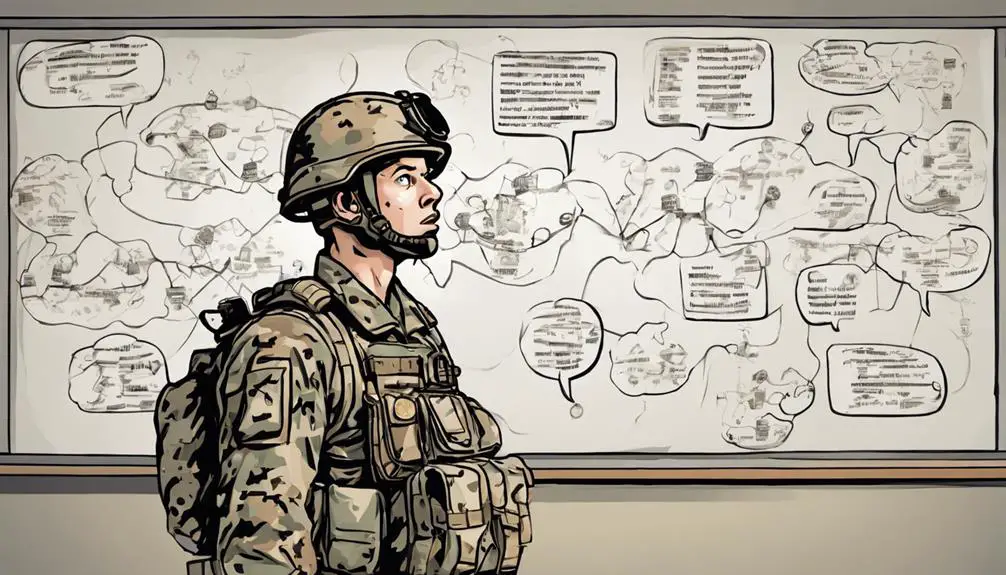
In the high-stakes world of military communication, even a single misunderstood acronym or phrase can trigger a 'lost in translation' moment, leading to costly delays or catastrophic consequences. You might think you're speaking the same language, but cultural missteps and language barriers can lead to disastrous misunderstandings.
Take, for instance, the term 'ROE' (Rules of Engagement). In one context, it might mean following strict protocols for combat, but in another, it could be mistaken for ' Roe' as in a type of fish. The difference is critical, and a simple miscommunication could lead to unintended casualties.
As you navigate the complexities of military slang, it's important to be aware of these potential pitfalls. A misplaced comma or a mispronounced phrase can have far-reaching consequences. When working with international teams or local forces, cultural nuances and language barriers can exacerbate the issue.
To avoid these 'lost in translation' moments, it's vital to double-check your communication, clarify any doubts, and remain vigilant about potential misinterpretations. By doing so, you can ensure seamless collaboration and minimize the risk of catastrophic errors.
Frequently Asked Questions
Are Military Acronyms Used in Other Government Agencies?
You might wonder, are acronyms used in other government agencies beyond the military?
The answer is yes. Agency adoption of acronyms is common, as they facilitate interagency sharing and communication.
In fact, many government agencies use similar abbreviations to simplify complex terms. This practice promotes efficiency and clarity across departments, making it easier for you to navigate the often-complex world of government agencies.
Can Civilians Use Military Acronyms in Everyday Conversation?
When you use acronyms in everyday conversation, you might wonder if it's okay to borrow from military slang. While it's not necessarily taboo, you should consider the context.
Using military acronyms can be seen as cultural appropriation, especially if you're not familiar with their origins.
However, in casual language, it's common to adopt abbreviations from various sources. Just be mindful of your audience and avoid using terms that might be misunderstood or offend.
Are Military Acronyms Standardized Across All Countries?
As you explore the world of acronyms, you'll find that standardization varies greatly across countries. International variations and language barriers create differences in acronym usage.
While some countries adopt similar acronyms, others have unique abbreviations. For instance, the UK's Ministry of Defence uses 'MOD' while the US Department of Defense uses 'DoD'.
These differences highlight the need for cultural awareness and adaptation when communicating across borders.
How Do Military Members Remember so Many Acronyms?
You're trying to decipher the secret code of military acronyms. Imagine a treasure chest overflowing with abbreviations, each one a puzzle piece in the military's complex language.
To access this treasure, military members rely on mnemonic devices, clever tricks that help them associate acronyms with memorable phrases or images. Repetitive training reinforces these associations, making the acronyms stick like glue in their minds.
With practice, they can recall them with ease, accessing the treasure of effective communication.
Are Military Acronyms Used in Formal Military Documents?
When creating formal military documents, you'll typically stick to standardized language, avoiding colloquialisms and slang.
In these documents, you'll rarely find military acronyms, especially those considered informal. Instead, you'll use formal language, adhering to document classification guidelines. This guarantees clarity and professionalism, making it easier for readers to understand complex information.
Conclusion
As you navigate the labyrinth of military slang, remember that acronyms are the threads that weave together the tapestry of military communication.
But, just as Ariadne's thread guided Theseus out of the Minotaur's maze, understanding these acronyms will guide you through the complexities of military jargon.
Now, armed with this knowledge, you can unravel the mystery of military slang and find your way through the trenches of technical terminology.

